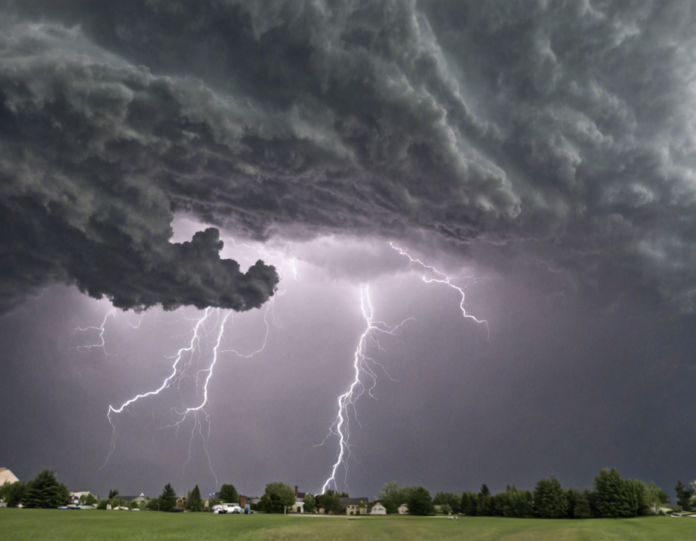Introduction
Recently, Southern Ontario has been experiencing an increase in the frequency and severity of thunderstorms. These severe weather events can bring about heavy winds, intense rainfall, lightning, hail, and even tornadoes. The threat of these severe thunderstorms has put residents on high alert and has raised concerns among authorities regarding public safety and infrastructure. In this article, we will delve into the causes of these severe thunderstorms, their impact, and ways to stay safe during such weather events.
Understanding Severe Thunderstorms
Thunderstorms are formed when warm, moist air rises in the atmosphere and condenses to form clouds. When these conditions intensify, they can lead to the development of severe thunderstorms. Several factors contribute to the formation of these severe weather events:
1. Instability: Instability in the atmosphere can lead to the rapid upward movement of air, creating strong updrafts within a thunderstorm.
2. Moisture: A significant amount of moisture in the atmosphere can fuel thunderstorm development, leading to heavy rainfall.
3. Wind Shear: Wind shear is the change in wind speed and direction with height in the atmosphere. Strong wind shear can create a rotating updraft within a thunderstorm, increasing the likelihood of tornado formation.
Effects of Severe Thunderstorms
Severe thunderstorms can have a range of destructive effects on both the environment and human infrastructure. Some of the key impacts include:
1. Flooding: Heavy rainfall associated with severe thunderstorms can lead to flash floods, causing damage to homes, roads, and agricultural land.
2. Lightning Strikes: Thunderstorms are often accompanied by lightning, which can pose a significant risk to individuals outdoors and may cause fires.
3. Hail Damage: Large hailstones can form within severe thunderstorms and cause damage to vehicles, crops, and buildings.
4. Tornadoes: In extreme cases, severe thunderstorms can produce tornadoes, which are highly destructive and can cause widespread damage in their path.
Staying Safe During Severe Thunderstorms
To ensure personal safety and reduce potential damage during severe thunderstorms, it is essential to follow these safety measures:
1. Monitor Weather Alerts: Stay informed about weather forecasts and severe thunderstorm warnings issued by local meteorological agencies.
2. Seek Shelter: If a thunderstorm warning is issued, seek shelter in a sturdy building and avoid windows, electrical appliances, and plumbing fixtures.
3. Avoid Outdoor Activities: Refrain from engaging in outdoor activities during severe thunderstorms to reduce the risk of lightning strikes.
4. Secure Outdoor Objects: Secure outdoor furniture, garden equipment, and vehicles to prevent them from being damaged by strong winds and hail.
5. Emergency Preparedness: Have an emergency kit prepared with essential supplies such as food, water, medications, and a flashlight in case of power outages.
Frequently Asked Questions (FAQs)
1. What is the difference between a regular thunderstorm and a severe thunderstorm?
– A regular thunderstorm is characterized by rain, lightning, and thunder, while a severe thunderstorm is more intense and can produce damaging winds, hail, and tornadoes.
2. How can I tell if a thunderstorm is turning severe?
– Look out for dark, menacing clouds, strong winds, frequent lightning, and rapidly changing weather conditions as signs of a severe thunderstorm.
3. Can I drive during a severe thunderstorm?
– It is advisable to avoid driving during severe thunderstorms due to reduced visibility, potential lightning strikes, and the risk of encountering flooded roads.
4. What should I do if I am caught outside during a severe thunderstorm?
– Seek shelter in a sturdy building or a hard-topped vehicle, avoid open areas, tall trees, and bodies of water, and crouch low, covering your head if caught in an open field.
5. Are there ways to mitigate the damage caused by severe thunderstorms to my property?
– Securing loose outdoor objects, reinforcing doors and windows, and trimming trees to prevent branches from falling can help reduce damage to your property during severe thunderstorms.
Severe thunderstorms pose a significant risk to communities in Southern Ontario, and it is crucial for residents to heed weather warnings and take appropriate safety precautions to protect themselves and their property. By understanding the factors that contribute to these severe weather events and following safety guidelines, individuals can minimize the impact of thunderstorms and stay safe during adverse weather conditions.








